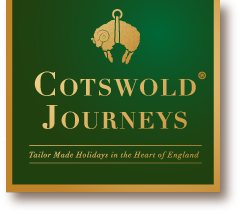You can drive around this small corner of the Cotswolds, but to better appreciate its beauty and interest, you are advised to walk around it. The following route is essentially flat and easy to follow with the help of a map (but does not include Bibury, which is a short walk from Ablington). Nearby Northleach has a fine wool church and an interesting mechanical music museum. To do the walk, turn right out of the church of St. James at Coln St Dennis. Walk along the quiet road towards Calcot. Follow the road as it bears a sharp left and then turn right onto a footpath to Calcot. At Calcot continue straight ahead across fields and follow the path through woods by the River Coln, which you cross, pass through the grounds of a house, and come to the church at Coln Rogers. Continue to a road and turn left. Follow this all the way to Winson. At the small green, keep left and straight on and then turn left opposite cottages across a pasture, across the river, and through a tree plantation. Beyond the trees turn right to come to a field. Go diagonally left across this to pass through a gate into a field which is at the beginning of a small, steep valley. Cross, go through a gate, and follow a track all the way to Ablington. Turn right to recross the river and at the junction turn right all the way back to Winson, then to Coln St. Rogers, and then (using the road or retracing your steps via Calcot) back to Coln St. Dennis.
Coln St. Dennis
Coln St. Dennis derives its name from the local river and the abbey of St. Dennis in Paris, which owned the manor in the Middle Ages. The parish church of St. James is unusual in that its original Norman plan of nave, central tower, and sanctuary, and much of the fabric, has been preserved intact. Now dedicated to St. James, the church was often referred to in earlier times as St. Kenelm’s, after the local saint and son of a king of 8th century Mercia, who was celebrated principally at Winchcombe Abbey before its closure. Though there is no structural evidence, it is likely that the church was built on the site of a Saxon predecessor. It is a simple, gently austere church in a quiet, comely village. The nave is 12th century, with fine reset 12th-century grotesque head corbels and a 12th-century tub-shaped font. The central tower has three 12th-century stages and a 15th-century upper stage. In the churchyard, have a look for the chest tomb of William Vann Hadwen, surgeon of Northleach, who died in 1835, a rectangular limestone monument supported on four freestanding miniature Doric columns.
Coln Rogers
Coln Rogers is a ‘Thankful Village’. Thankful Villages (or ‘Blessed Villages’) are settlements in England and Wales that provided members of the armed forces in World War I, all of whom returned home alive – a rarity during that appalling conflict. The term ‘Thankful Village’ was popularised by the writer and historian Arthur Mee in the 1930s. In Enchanted Land (1936), the introductory volume to The King’s England series of guides, he identified thirty-two such villages. In a recent update, researchers have identified fifty-two civil parishes in England and Wales. There are no settlements in Scotland or Northern Ireland that did not lose a member of the community in World War I. Fourteen of the English and Welsh villages are considered “doubly thankful”, in that they lost no service personnel during World War II.
Coln Rogers takes its name from the knight Roger of Gloucester, who donated the manor to the monks of Gloucester in the 12th Century. The church of St Andrew dates from Saxon times and follows the simple Saxon plan of nave and chancel, the south porch and west tower having been added later. Later additions and maintenance have covered the Saxon features externally, though internally the distinctive Saxon construction of the walls has been uncovered here and there. Most distinctive, however, is the chancel arch, which, with its simple practicality, gives a strong sense of early Christianity in England.


0 Comments